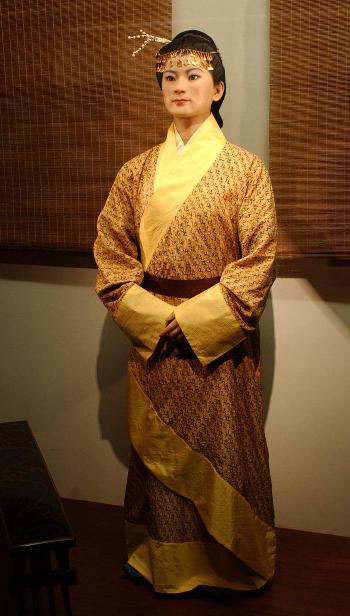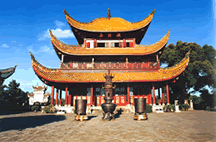search for a Trip
Introduction of Changsha
 Situated in the river valley along the lower part of Xiang River, Changsha is the capital city of Hunan Province. The recorded history of Changsha can be traced back 3000 years. As the capital of Hunan Province, Changsha is the center of the province in terms of politics, economy, culture, education, transportation, communication, finance, business and information. Under its jurisdiction are one city, three counties and five districts. They are Liuyang City, Changsha County, Wangcheng County, Ningxiang County and north, south, west, east and suburb districts.
Situated in the river valley along the lower part of Xiang River, Changsha is the capital city of Hunan Province. The recorded history of Changsha can be traced back 3000 years. As the capital of Hunan Province, Changsha is the center of the province in terms of politics, economy, culture, education, transportation, communication, finance, business and information. Under its jurisdiction are one city, three counties and five districts. They are Liuyang City, Changsha County, Wangcheng County, Ningxiang County and north, south, west, east and suburb districts.
Changsha City lies in the northeast of Hunan Province, at the lower reaches of the Xiangjiang River. The Xiangjiang River runs from its north to south. North of the Dongting Lake and south to Hengshan Mountain, it was once called the lips of Hunan and Hubei, the throat of Guizhou and Guangdong. Changsha is a beautiful city in South China with many hills, rivers, lakes, pains, lakes and cities.
Main attractions in Changsha
 Mawangdui Han Tombs
Mawangdui Han Tombs
Located in the eastern suburb of Changsha City, the world famous Mawangdui Han Tombs is one of the most fascinating attractions in Hunan Province. It is no exaggeration to say that the Mawangdui Han Tombs is an open book to the glorious West Han Dynasty (206BC-24). All three tombs were excavated between 1972 and 1974.
According to the research this place was a family graveyard from at least two thousand years ago. The tombs are very grand and complicated as well. Number 1 and Number 3 tombs were in excellent condition when excavated and Number 1 tomb is the largest among the three. Number 1 and Number 2 tombs have been in filled. Number 3 tomb has been preserved and covered by a ceiling for the benefit of the visitors. A map excavated from Number 2 tomb will provide another surprise. Its drawing technique is very advanced, place marks being very similar to a modern map. It was praised as 'a striking discovery' by foreigners when exhibited in America, Japan, Poland and many other countries. Silk books, with more than one hundred thousand Chinese characters are rare historical artifacts. The content deals with ancient philosophy, history, science, technology, medicine and many other aspects.
Yueyang Tower
Yueyang Tower is one of the Three Great Towers south of the Yangzi (along with the Yellow Crane Tower in Wuhan and Tengwang Pavilion in Nanchang). On the eastern banks of Dongting Lake, the terraces of the tower provide stunning views of the waters below. It is said that the site was once a platform for the Wu Kingdom (222-250AD) general Lu Su to train his naval troops. The tower was first built in 716 and was subsequently rebuilt on numerous occasions. The current Qing style structure is over 20 meters (66ft) tall and was last renovated in 1983. The tower was built without the use of a single nail. Yueyang Tower is also the subject of the famous poem 'Notes on the Yueyang Tower' by Song dynasty (420-479AD) poet Fan Zhongyan. Chairman Mao also visited this tower and wrote a poem about the tower. The third floor of the tower has his handwriting preserved on wooden boards.
Hengshan Mountain

Hengshan Mountain, named the Southern Mountain of the Five Sacred Mountains, is located in Hengyang County, the middle part of Hunan Province. It has 72 peaks and extends 150 kilometers, with 800 miles in circumference. The Huiyan Peak is the south end of the peaks, Yuelu Mountain in Changsha City is the north end, and the Zhurong Peak is the highest, with 1,290 meters above sea level. On the top, the Shaolin Temple and the Watching Sunrise Platform are the best scenic spots.
Besides marvelous temples, the mountain also boasts 9 ponds, 9 wells, 9 pools, 10 caves, 15 rocks, 25 streams and 38 springs, in harmony with green forests and fragrant flowers and grass. Grand, graceful, sequestered and culturally abundant, Hengshan Mountain leads the five sacred mountains by its gracefulness. As early as 2,000 years ago, many emperors and celebrities visited Hengshan Mountain and left quite a lot of stone inscriptions of poems, including that of famous poets: Libai, Dufu and Zhuxi. With beautiful scenery and rich cultural heritage, the mountain attracts travelers home and abroad.
Climate of Changsha
|
Month |
Jan |
Feb |
Mar |
Apr |
May |
Jun |
Jul |
Aug |
Sep |
Oct |
Nov |
Dec |
|
Temperature (Celsius) |
-3.1 |
-2.3 |
10.5 |
20.1 |
25.8 |
29.0 |
34.8 |
36.4 |
29.4 |
25.4 |
19.1 |
10.7 |
China Attractions Guide
- Anhui Attractions
- Beijing Attractions
- Chongqing Attractions
- Fujian Attractions
- Gansu Attractions
- Guangdong Attractions
- Guangxi Attractions
- Guizhou Attractions
- Hainan Attractions
- Henan Attractions
- Hongkong Attractions
- Hubei Attractions
- Hunan Attractions
- Inner Mongolia Attractions
- Jiangsu Attractions
- Jiangxi Attractions
- Manchuria Attractions
- Ningxia Attractions
- Qinghai Attractions
- Shaanxi Attractions


